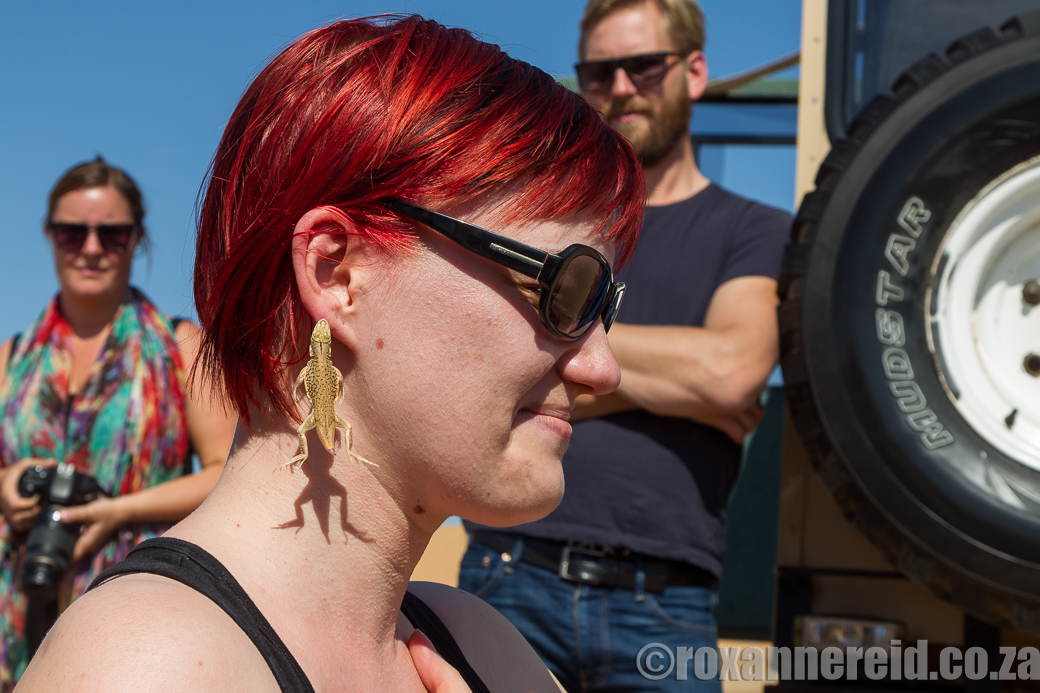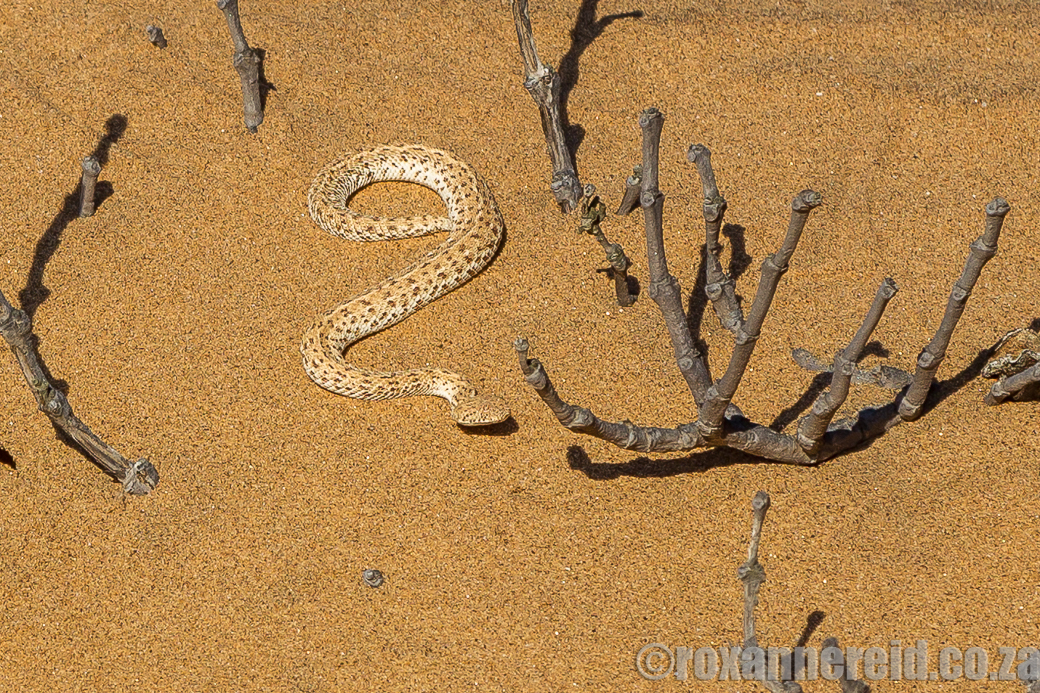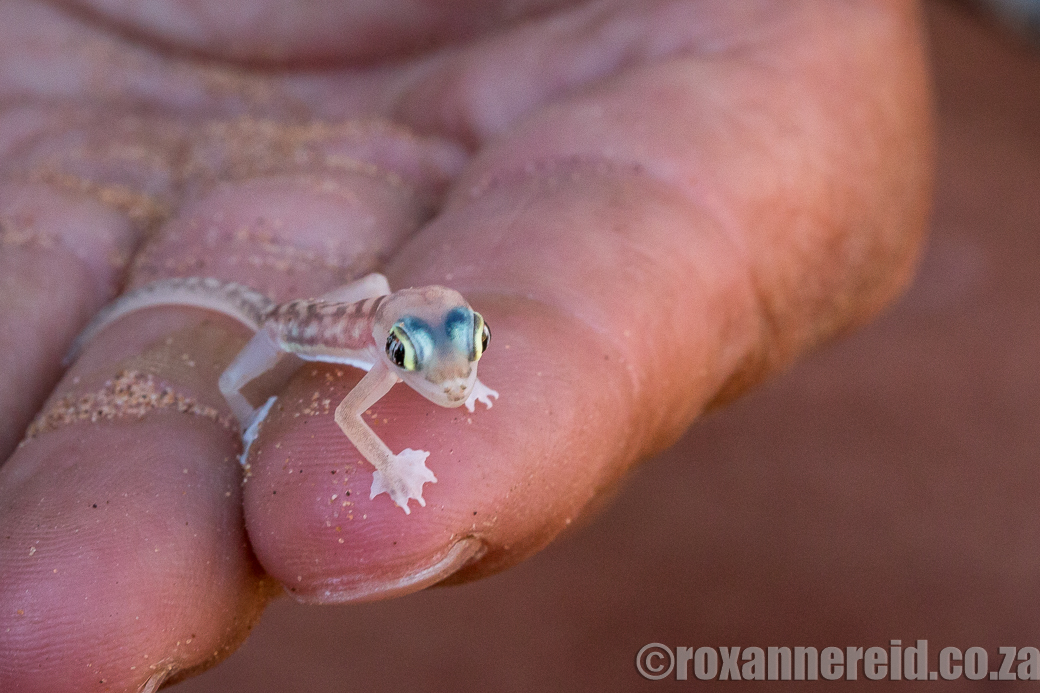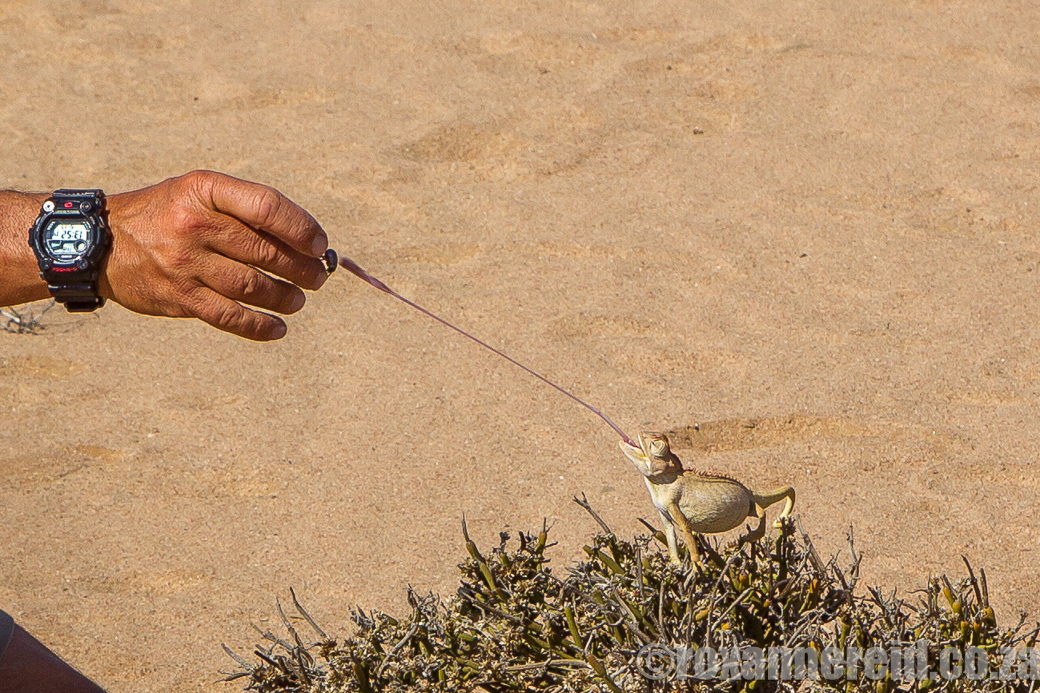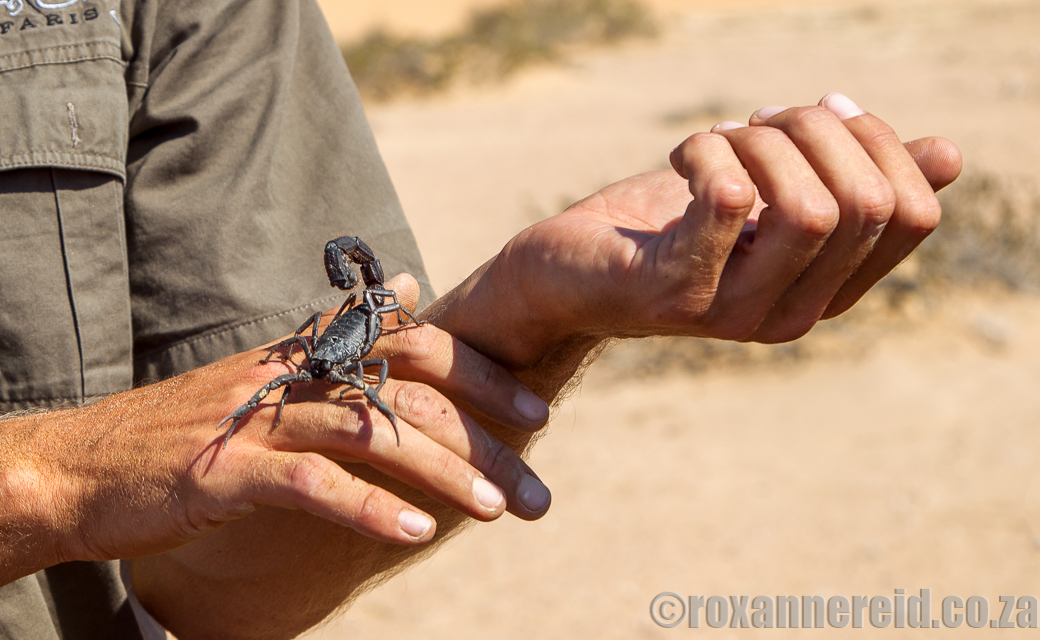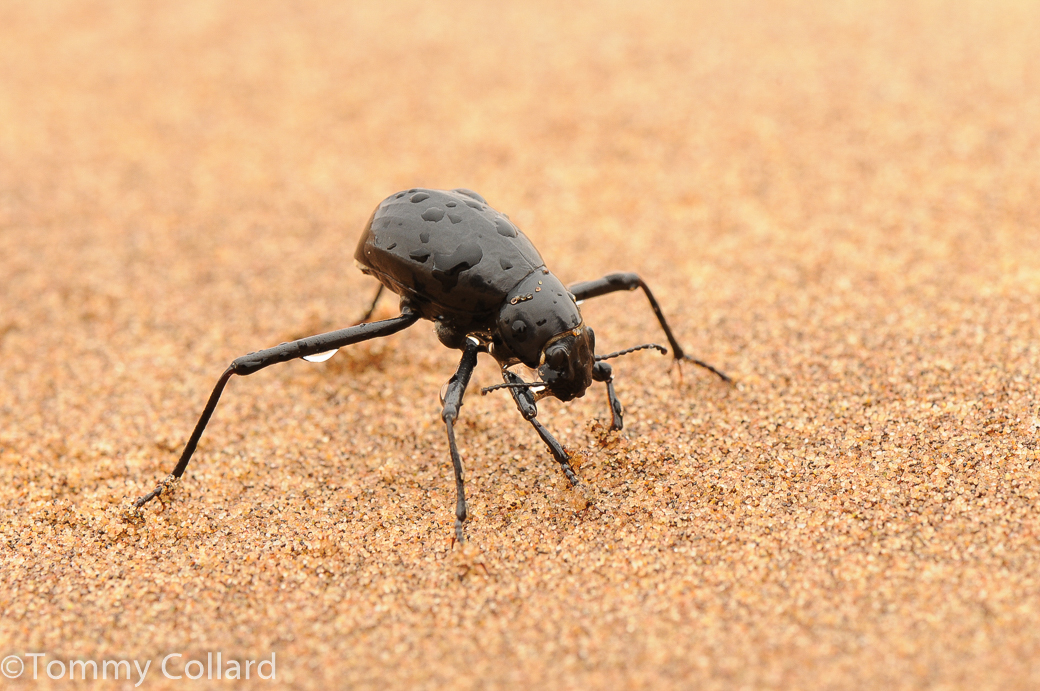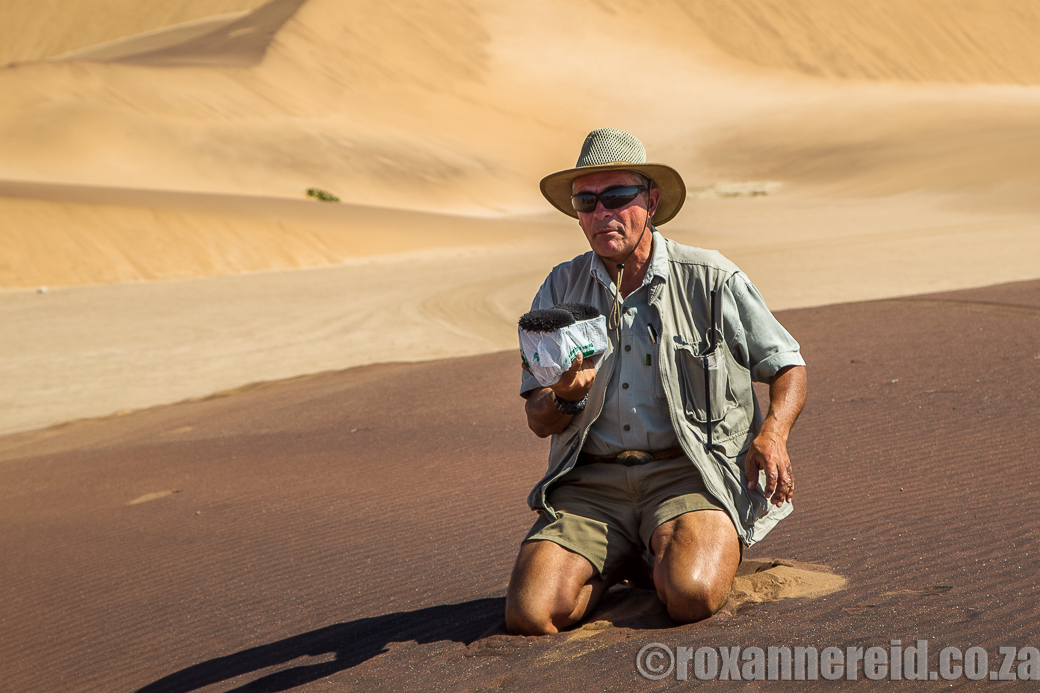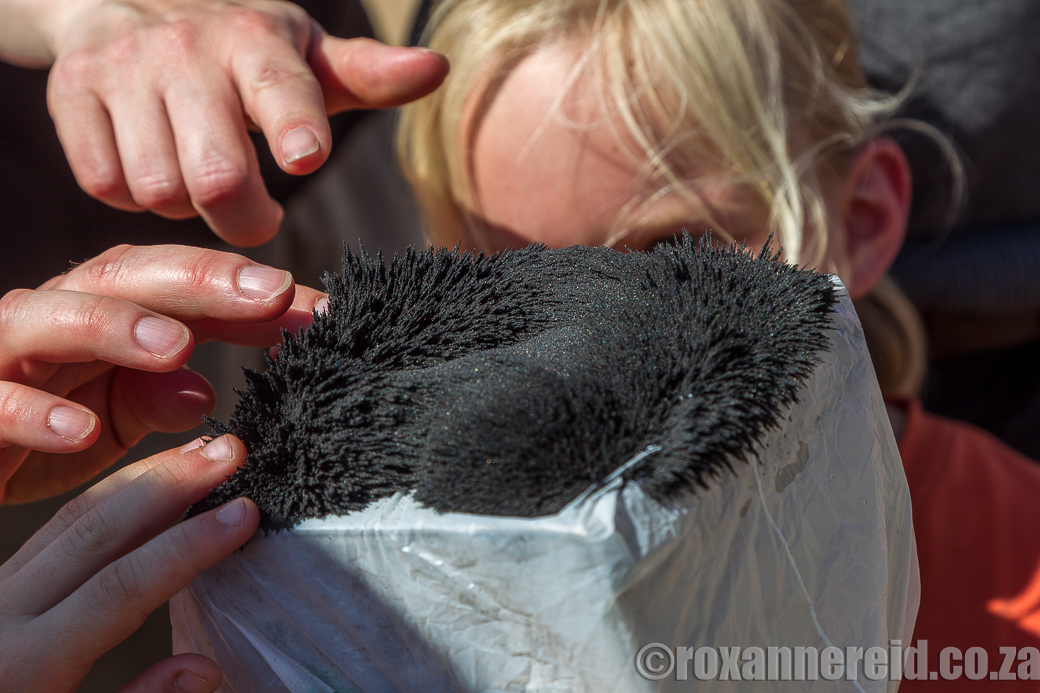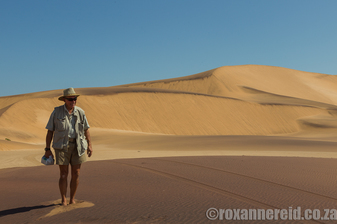
By Roxanne Reid
Think the sand dunes outside Swakopmund in Namibia are barren? Join Tommy Collard on a Living Desert Tour and he’ll prove that every patch of sand is a gold mine of fascinating creatures for those who know how to look. Read about our adventure with Tommy or discover 15 facts about Swakopmund’s dunes and desert creatures.
Think the sand dunes outside Swakopmund in Namibia are barren? Join Tommy Collard on a Living Desert Tour and he’ll prove that every patch of sand is a gold mine of fascinating creatures for those who know how to look. Read about our adventure with Tommy or discover 15 facts about Swakopmund’s dunes and desert creatures.
1. The highest dune between Walvis Bay and Swakopmund is 115m and dunes can move up to 2m a year.
2. The toes of the shovel-snouted lizard are serrated and males will bite another’s toes off in a fight. Although they re-grow, that male won’t be interested in chasing any females, so competition to breed is eliminated. They’re also feisty creatures that will latch on and dangle from your ears like earrings.
3. The shovel-snouted lizard does a ‘thermal dance’ on the hot sand to stop its feet from burning on the hot sand, lifting one front leg and the opposite back leg in rotation.
4. Peringuey’s adder has eyes on top of its head so it can hide in the sand and still watch for something to catch and eat. It’s also called a sidewinder because of the way it moves, with only half of its body touching the hot sand at any time.
5. A sidewider’s mouth opens to 180 degrees and it has a heart with three chambers. It reproduces by live birth and the babies are just as dangerous as a full-grown adult.
4. Peringuey’s adder has eyes on top of its head so it can hide in the sand and still watch for something to catch and eat. It’s also called a sidewinder because of the way it moves, with only half of its body touching the hot sand at any time.
5. A sidewider’s mouth opens to 180 degrees and it has a heart with three chambers. It reproduces by live birth and the babies are just as dangerous as a full-grown adult.
6. Birds like trac trac chats and Gray’s larks don’t eat dune ants because they contain formic acid.
7. The endemic golden mole is blind but it can ‘swim’ through the sand, covering some 4-6km a night.
8. The Palmato gecko can’t blink so it wipes sand from its eyes with its tongue.
7. The endemic golden mole is blind but it can ‘swim’ through the sand, covering some 4-6km a night.
8. The Palmato gecko can’t blink so it wipes sand from its eyes with its tongue.
9. Fitzsimmons burrowing skink is a legless lizard that smells with its tongue. Its scales are super-smooth, enabling it to ‘swim’ below the surface of loose sand on the dunes with ease.
10. A Namaqua chameleon is the fastest chameleon in the world, moving at speeds of up to 3km/h.
11. If a Namaqua chameleon’s tongue was a car it could accelerate from 0 to 100km/h in 1/100th of a second, according to a study at Brown University.
10. A Namaqua chameleon is the fastest chameleon in the world, moving at speeds of up to 3km/h.
11. If a Namaqua chameleon’s tongue was a car it could accelerate from 0 to 100km/h in 1/100th of a second, according to a study at Brown University.
12. Scorpions in the Namib can be up to 18cm long. One of the species is active only during the day and there’s no anti-venom for it.
13. Scorpions are among very few creatures of the Namib dunes that provide care to their offspring; they carry their babies on their backs.
13. Scorpions are among very few creatures of the Namib dunes that provide care to their offspring; they carry their babies on their backs.
14. There are thousands of beetle species in the Namib. Some of them stand on the dunes in fog, bums in the air. Moisture condenses on their bodies and runs down into their mouths, and they can drink 40% of their body weight in a single morning.
15. Black layers of magnetite occur in the dunes. It’s magnetic so you can get it to stick to a magnet you pass over the sand; it’s surprisingly soft and furry to the touch.
Did you enjoy the article? Pin this image!
Video
Watch Tommy’s Living Desert Tours’ video below. It shows some desert creatures like the sidewinder, burrowing skink, palmato gecko, shovel-snouted lizard and Namaqua chameleon in action.
Watch Tommy’s Living Desert Tours’ video below. It shows some desert creatures like the sidewinder, burrowing skink, palmato gecko, shovel-snouted lizard and Namaqua chameleon in action.
More about Namibia
Copyright © Roxanne Reid - No words or photographs on this site may be used without permission from roxannereid.co.za. I do not hold copyright of the video.
Copyright © Roxanne Reid - No words or photographs on this site may be used without permission from roxannereid.co.za. I do not hold copyright of the video.

